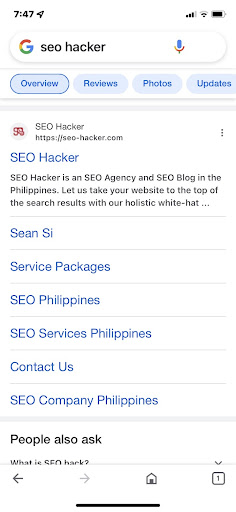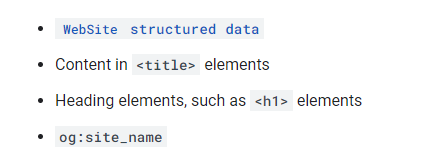Is Google’s New Search Results Update Important to SEO?
Title tags are being forcibly replaced by Google. For sure you have noticed this if you have been paying attention to your website’s search rankings. Here’s what you can do about it now and how you can make it work to your advantage.
This is a follow-up to Google’s core and helpful content update rollout last September. The Google search results update involves:
- Replacing title tags with site names
- Favicon’s (website’s logo or icon) expanded size and shape
- The prominence of search ads’ label to “Sponsored” in bold black text
Why Google Made This New Search Results Update
According to Google, adding site names to search results on mobile will enable users easily identify websites associated with each result. This update will also help users make sense of the information they see in the search results at a glance.
Do take note that this feature is only available for Google mobile search results in English, German, French, and Japanese languages as of today. Also, this feature currently only supports home pages at the domain level, not at the subdirectory level.

As you can see, when I did a mobile search for SEO Hacker, it showed the search engine results page (SERP) with the name of our website. It also showed the company’s favicon and breadcrumbs at the same time.
However, when I did a non-branded keyword mobile search (I typed “SEO Philippines”), the title tags still showed in the SERP.

It’s also worth noting that when you type the brand name and its related keywords, title tags will still show in the SERP.
Looking at the examples above, you will see a website name and the URL for each result. This brings a better context of what websites you see, so you can be confident of the websites you are visiting.
I also did notice that the size and shape of the website’s favicons have changed, making it easier for brands to be visible.
Finally, Google made sure that the paid ads in the search results are visible enough for the users to see by changing the ad notifier from “Ads” to “Sponsored.”
What You Need To Know About This Feature Update
Some SEO experts like myself get all worked up whenever Google updates its algorithms. Looking at the majority of Google’s past update rollouts, they have greatly impacted the volatility of website rankings. As an SEO professional, you should always stay abreast of 4Google’s updates, hence this article.
Replacing Title Tags With Site Names
Firstly, Google’s process for generating site names on the Google Search results page is completely automated. Both the content of your website and references to it are also taken into account by Google.
To automatically generate your site name, Google uses the following sources from your website:

Looking at the following sources Google uses to generate your site name highlights the extreme importance of adding or improving the structured data of your website. Structured data is a format used to organize information on a website. This format can help search engines understand the contents of a page and provide more relevant results to users. Additionally, it triggers knowledge panels, featured snippets, and event snippets, making SERPs more informative.
When it comes to this new search results update, Google uses the Website structured data type, specifically the “name” property, to determine the name of the website. Do take note that the structured data must be displayed on your website’s home page.
To learn how to add structured data to your homepage, you can go to SEO Hacker’s guide on how to create structured data. You can also find the technical and content guidelines for adding Website Structured Data through this link.
Favicon’s Expanded Size and Shape
As mentioned earlier, the size and shape of the website’s favicons have changed. They’re expanded, which makes it easier for brands or companies to be visible on the search results page.
Although a favicon does not have much bearing on SEO, it’s still important for brand recognition and attracting users. Favicons also let search users easily distinguish your brand from your competitors.
Google search results can include your favicon if you have one for your website. However, there are guidelines on how to make your website eligible for a favicon. You can read about the guideline here. This guideline will also show you how to implement favicons and show up properly in SERP.
How Is Google’s New SERPs Update Important to SEO
Google’s new search results update can directly affect SEO. Title tags and structured data are important elements that help search algorithms understand what your webpage is about.
Remember the non-branded keyword mobile research I did earlier? Not only did the search result show my company’s website, but it also showed other websites with my non-branded keyword in their title tags.
What this experiment reveals to us is that even if Google does not confirm or deny whether these updates are important to SEO or not, it’s in everybody’s interest to optimize every opportunity that we have for a website to rank and get click-throughs in the SERPs.
Key Takeaway
Google always places utmost importance on listening to its users by providing a useful and meaningful experience for them. This explains why they are constantly exploring how to provide helpful information by introducing new features and design elements.
Keeping your site details correct so that your favicon and site name is displayed is the only SEO consideration here, which may improve your search engine rankings and increase brand recognition and visibility in search engines.
